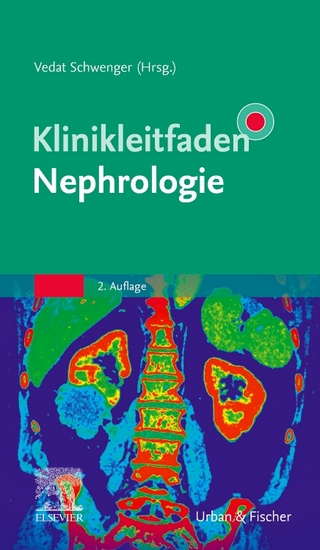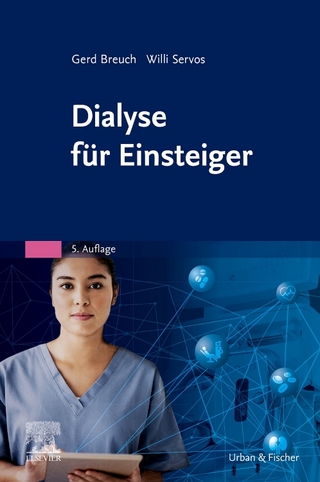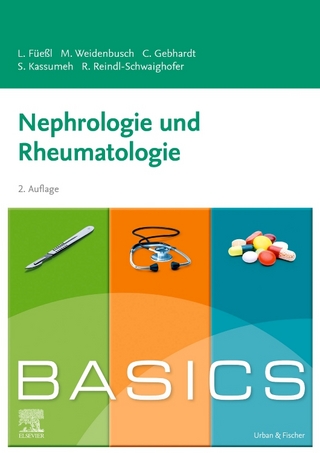
Myths and Shibboleths in Nephrology
Springer-Verlag New York Inc.
978-1-4020-0616-6 (ISBN)
The book is suitable as a stimulus for provocative discussions for nephrologists, internists, house staff, and medical students.
Increasingly, medicine in general and nephrology specifically is based on clinical trials and verifiable presumption. Still, however, much of everyday clinical practice is the consensus of pundits and experts unable to validate their suggestions beyond personal bias.
In this unique volume, several core beliefs in renal medicine are examined and challenged. Starting as assignments for nephrology fellows, this book grew out of surprising `revelations' indicating that `the emperor has no clothes'.
The book is suitable as a stimulus for provocative discussions for nephrologists, internists, house staff, and medical students.
Myths and Shibboleths.- 1. Urinary tract infection can lead to end stage renal disease (ESRD).- 2. Kidney donation does not jeopardize function in the remaining kidney.- 3. Hypertension imposes a risk of chronic kidney failure.- 4. Angiotensin converting enzyme inhibitors (ACEi) are superior to other antihypertensive drugs because of their renoprotective properties.- 5. Dietary protein restriction slows progression of renal insufficiency.- 6. Plasmapheresis is beneficial in some renal disorders.- 7. Urinary tract infection is more prevalent in diabetes.- 8. Type 1 diabetes is more likely than type 2 diabetes to lead to nephropathy and ESRD.- 9. Pharmacological strategies may prevent acute tubular necrosis (ATN).- 10. Intravenous iron may be hazardous in infected hemodialysis patients.- 11. Peritoneal dialysis is equivalent to hemodialysis.- 12. Rationing of ESRD treatment is an unavoidable reality.- 13. Tacrolimus is superior to cyclosporine in renal transplantation.- 14. Dialyzer re-use is safe and cost effective.- 15. Living related pancreas after kidney transplantation is preferable to cadaveric simultaneous pancreas-kidney transplantation.- 16. Administration of active vitamin D metabolites is beneficial in patients with advanced chronic renal failure (pre end-stage renal disease).- 17. Surgical intervention and prompt nephrectomy are preferred in emphysematous pyelonephritis.- 18. Mortality in chronic hemodialysis is greater in the U.S. than in Europe and Japan.- 19. A single hemodialysis treatment prevents uremic bleeding and restores platelet function.- 20. Kidney biopsy is indicated in every case of lupus nephritis.- 21. Indicators of glycemic control in diabetic ESRD patients should be equivalent to those utilized in earlier stages of diabetic nephropathy.- 22.Fish oil is effective therapy for IgA nephropathy.- 23. Physician assistants should replace nephrologists in dialysis units.- 24. Patients with severe cerebrovascular accidents (CVA) require long-term bladder catheters.- 25. Pre-transplant blood transfusions enhance renal allograft survival.- 26. Hemoperfusion is superior to hemodialysis in the treatment of certain poisonings and/or drug overdoses.- Epilogue.
| Erscheint lt. Verlag | 30.6.2002 |
|---|---|
| Zusatzinfo | XIX, 74 p. |
| Verlagsort | New York, NY |
| Sprache | englisch |
| Maße | 160 x 240 mm |
| Themenwelt | Medizinische Fachgebiete ► Innere Medizin ► Nephrologie |
| ISBN-10 | 1-4020-0616-0 / 1402006160 |
| ISBN-13 | 978-1-4020-0616-6 / 9781402006166 |
| Zustand | Neuware |
| Haben Sie eine Frage zum Produkt? |
aus dem Bereich


